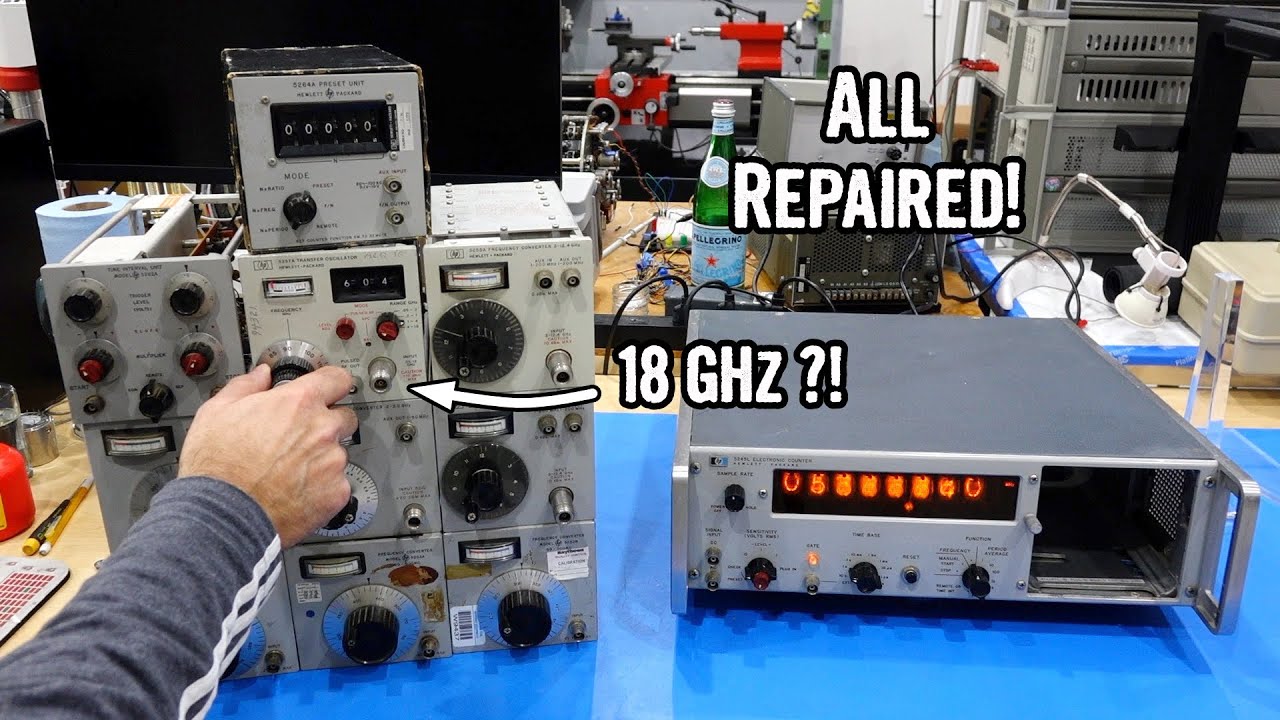The Hewlett-Packard 5245L frequency counter achieved its peak performance in 1968 with the release of the model 5257A Transfer Oscillator, which allowed the frequency counter to measure signals from DC to 18 GHz, an utterly exotic microwave frequency (Ku band) by 1960s standards.
Unlike the plug-ins repaired in earlier episodes, which extended the DC–50 MHz frequency range of the base unit by mixing the input signal with a calibrated oscillator output and counting the difference frequency, often restricting the range the plug-in could measure to a limited band, the 5245L uses an extremely clever sampling scheme to perform its measurements in the time (as opposed to frequency) domain and cover the entire range from 50 MHz to 18 GHz with a single plug-in. Internally, it uses a voltage-controlled oscillator and phase-locked loop, all built with discrete transistor circuitry, to automatically tune the signal mixed with the input. The only drawback is that the user had to have some idea of the range of frequency being measured in order to set the divider applied to the frequency or else do a little math to figure out its setting. This would be the best that could be done until the next generation of counters in the 1970s automated this process with an on board microprocessor.
